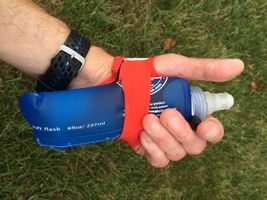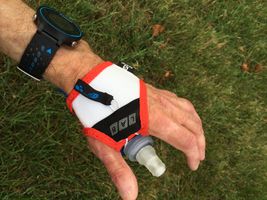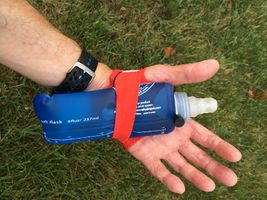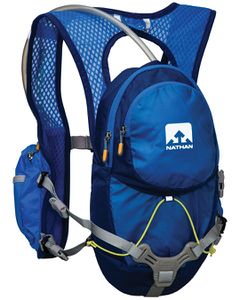Difference between revisions of "Best Hydration Systems"
User:Fellrnr (User talk:Fellrnr | contribs) (Created page with "Correct hydration is of vital importance, and sometimes it is necessary to carry your drinks while running. '''Remember to drink based on your thirst,...") |
(No difference)
|
Revision as of 14:16, 2 August 2014
Correct hydration is of vital importance, and sometimes it is necessary to carry your drinks while running. Remember to drink based on your thirst, as hydration is dangerous and can be fatal, while dehydration is far less of an issue than most people believe. Carrying fluids is always inconvenient, so choosing a hydration system is a matter of finding the least bad approach. There are several options open to you:
- Handheld bottle. Because the bottle is in your hand, you don't have problems with it jostling, rubbing, or banging against you. However the bottle occupies one (or both) of your hands, and can tire your arms. In some situations it can also change your biomechanics and running form.
- Waist pack. Putting your fluids around your waist frees up your hands and moves the weight onto your body. You can carry more fluid in this position than in a handheld bottle. Unfortunately, waist packs either put pressure on to your abdomen, which causes digestive problems, or it puts pressure on to your hips, causing the problems in the muscles of your hips and legs. Waist packs are particularly problematic for the ITB, as they put pressure on the activating muscle (TFL).
- Back pack. Using a back pack allows for the greatest quantity of fluid and keeps the weight on your shoulders and back which are stronger than your arms or abdomen. The downside to a backpack is that they tend to bounce and chafe while running.
- Cheating. The ideal option if you can manage it is to cache or buy drinks along your running route so you don't need to carry it.
Contents
1 Handheld Bottles
The most common approach to handheld running bottles is a simple strap around a bottle designed for cycling or other purposes. The classic example is the Nathan Quickdraw, which includes a pocket in the strap for a phone, gels, etc. While these bottles work they put a lot of twisting stress on your forearms and are a poor solution to the problem. The best bottles are the ones that allow your hand to go through the middle, as these are far more relaxing to hold. These oval running bottles are common in Europe, but seem to be hard to find in the US. However, they are starting to become available as the precision training and Hydrogrip.
1.1 Salomon Hydration Gloves
Salomon has a novel approach using a small hydration bladder that fits in a partial glove. They call this the "Salomon Sense Hydro S-Lab Handheld Hydration Set". This is a novel solution that at least partly works. It is reasonably relaxing to hold, but it only holds 8 fluid ounces/200 mL and is rather pricy for what it is.
- Salomon Sense Hydro S-Lab Handheld Hydration Set
2 Hydration Waist Packs
I have never found a waist pack that I get on with, and find they always cause either abdominal/digestive problems, or issues with the hip muscles. However, I know many runners get on well with the fuel belt system, typically for the marathon distance training runs. These small bottles distribute the weight better than systems that use one or two standard sized water bottles.
3 Hydration Backpacks
When we need more fluid than I can carry in a single handheld bottle, I swap to a hydration backpack. None of the backpacks I have tried avoid the problem of bouncing and chasing completely, but there are two that stand out as better than the others that I have tried.
- Nathan HPL 020 Vest. This hydration pack has been around for quite a while, and thankfully Nathan has not messed with a winning design. The pack holds 2 L along with various pockets for bits and pieces. Its adjustments hold the pack in place better than others I've tried, and it has minimal jostling.
- UltrAspire Alpha Vest. The Alpha is a far more minimalist hydration pack, weighing less than Nathan, but achieving good levels of control. The Alpha is light weight, which makes it a little cooler than many packs, and it does not have quite so much storage space as the Nathan. I found the connectors for the chest straps a little fiddly, but they work once you get used to them. There is a rear pouch with a magnetic closure that allows you to access items without removing the pack, which is rather cool.






